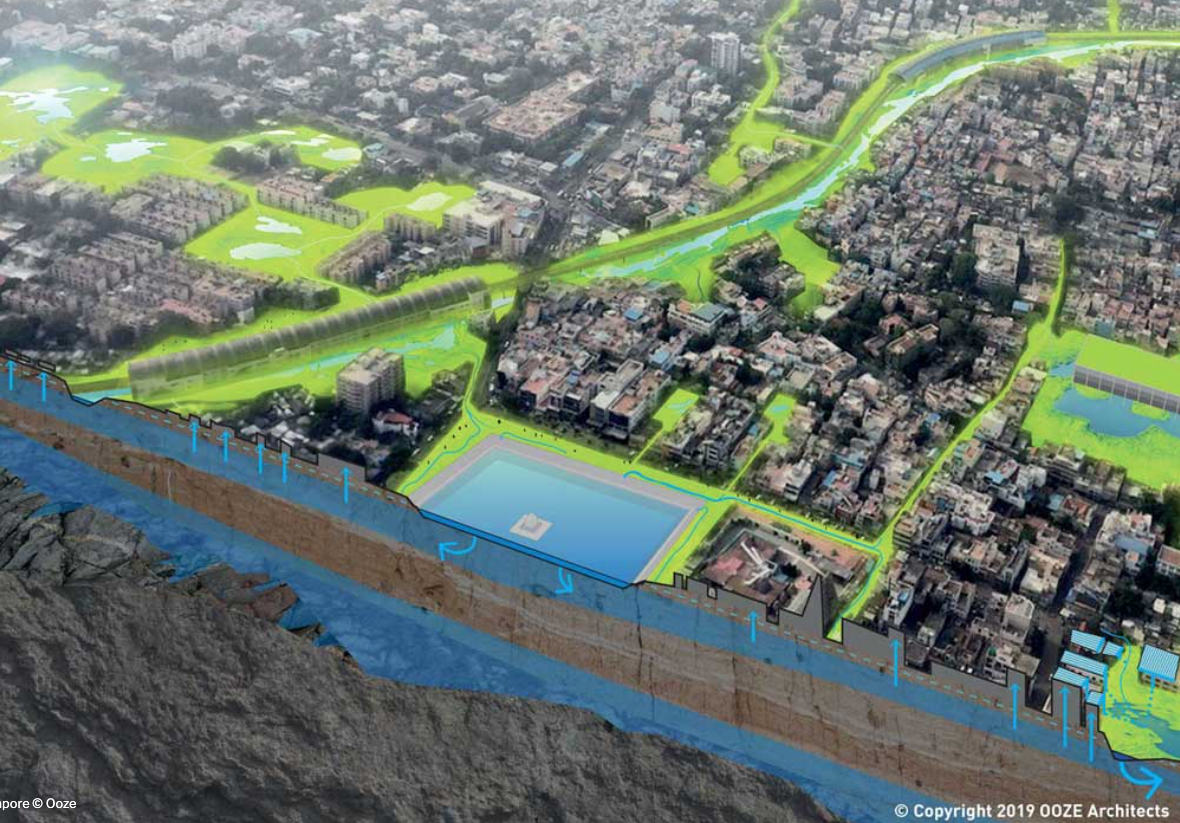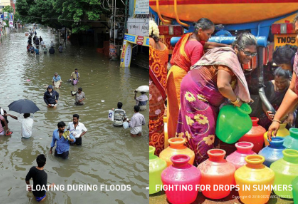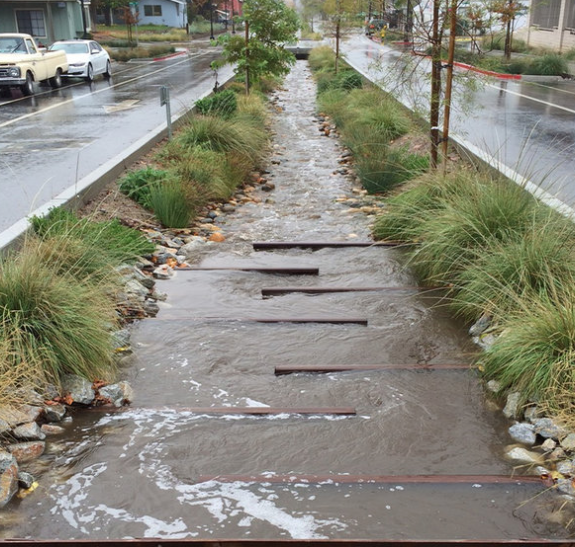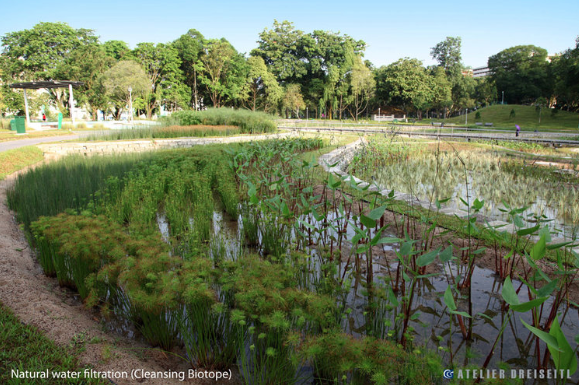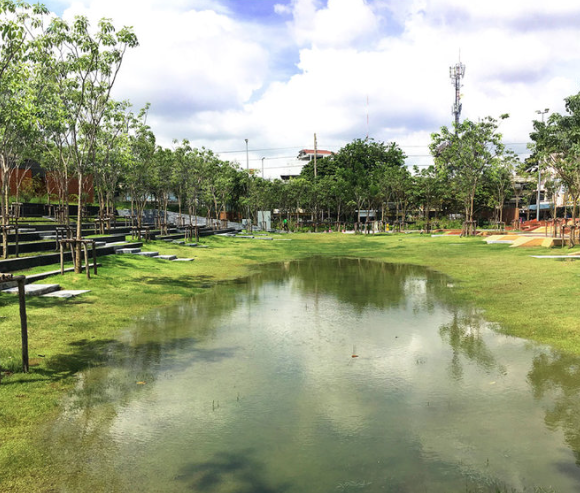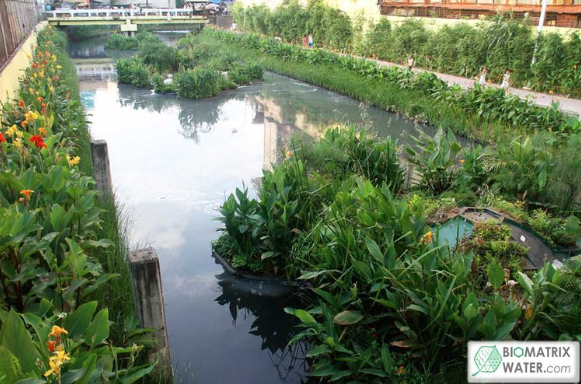The ‘City of 1,000 Tanks’ project offers a holistic solution to the problems of floods, water scarcity and pollution in Chennai (Ref. 1). The project's primary objective is to develop a "Water Balance Model" for the city, which involves collecting rainwater, treating wastewater and runoff pollution with decentralized nature-based solutions, as well as prevent climate-change-induced droughts and saline intrusion due to sea-level rise (Ref. 1, 2). This is achieved through developing various nature-based water management solutions and improving the recharge capacity of traditional temple tanks (Ref 1). The project began in 2018, following the call for action event of the "Water as Leverage for Resilient Cities Asia" (a bilateral program spanning several Asian countries). The Water Balance Model is developed as a strategy with an incremental implementation process (Ref 1, 2). The project started with pilot projects and then progressed to flagship projects before full city-wide implementation (Ref. 3).
Overview
Nature-based solution
- Blue infrastructure
- Lakes/ponds
- Rivers/streams/canals/estuaries
- In-land wetlands, peatlands, swamps, and moors
- Green areas for water management
- Rain gardens
- Swales and filter strips
- Sustainable urban drainage systems
Key challenges
- Climate action for adaptation, resilience and mitigation (SDG 13)
- Climate change adaptation
- Regeneration, land-use and urban development
- Regulation of built environment
- Promote natural styles of landscape design for urban development
- Water management (SDG 6)
- Flood protection
- Stormwater and rainfall management and storage
- Improvements to water quality
- Cultural heritage and cultural diversity
- Protection of historic and cultural landscape/infrastructure
- Inclusive and effective governance (SDG 16)
- Inclusive governance
- Effective management
- Social justice, cohesion and equity (SDG 10)
- Environmental education
Focus
Project objectives
Implementation activities
Climate-focused activities
Climate change adaptation:
- Implement measures that prevent/manage desertification, soil erosion and landslides
- Implement solutions to capture/store water to increase its availability and prevent shortages from droughts
- Restore wetlands and/or coastal ecosystems to dissipate the effects of flooding and/or storms
- Implement sustainable urban drainage infrastructure (e.g. to make space for water)
- Renaturalization of rivers and other water bodies
Main beneficiaries
- Local government/Municipality
- Public sector institution (e.g. school or hospital)
- Citizens or community groups
Governance
Management set-up
- Co-governance with government and non-government actors
Type of initiating organisation
- Regional government
- Local government/municipality
- Non-government organisation/civil society
- Financial institution
- Multilateral organisation
- Transnational network
Participatory approaches/ community involvement
- Dissemination of information and education
- Consultation (e.g. workshop, surveys, community meetings, town halls)
Details on the roles of the organisations involved in the project
Project implemented in response to ...
Financing
Total cost
Source(s) of funding
- Multilateral funds/international funding
Type of funding
- Direct funding (grants, subsidies, or self-financed projects by private entities)
Non-financial contribution
Impacts and Monitoring
Environmental impacts
- Climate change
- Reduced emissions
- Water management and blue areas
- Improved water quality
- Increased protection against flooding
- Improved stormwater management
- Reduced risk of damages by drought
Economic impacts
- Reduce financial cost for urban management
Socio-cultural impacts
- Social justice and cohesion
- Increased involvement of locals in the management of green spaces
- Education
- Increased support for education and scientific research
- Increased knowledge of locals about local nature
- Increased awareness of NBS and their benefits
- Safety
- Improved community safety to climate-related hazards
Type of reported impacts
Presence of formal monitoring system
Presence of indicators used in reporting
Presence of monitoring/ evaluation reports
Availability of a web-based monitoring tool
References
(2) Ooze (no date), available at Source link (accessed 28-02-2023)
(3) Unknown, 2021, City of 1000 Tanks unveils vision for a water-rich Chennai, Citizen Matters, October 5, viewed on 28 February 2023, Source link
(4) Arivanantham R, 2022, ‘City of 1,000 Tanks’ kickstarts action plan to make ‘Singara Chennai’ water rich, NavJeevan, October 7, viewed on 28 February 2023, Source link
(5) City of 1000 Tanks (no date), available at Source link (accessed 28-02-2023)
(6) Withers, Jane (2020) A “sponge city” in India to face water crisis, available at Source link (accessed 06-04-2023)
(7) Holcim Foundation (2020) Scarcity vs abundance: Closing the water loop, available at Source link (accessed 06-04-2023)
(8) Shuler, Sydney (2023) Chennai Water Scarcity Solutions Can Help Other Countries Avoid Waterless Living, available at Source link (accessed 15-04-2023)
(9) Resilient Cities Network (2023) Cities Solve, Cities Deliver | How cities are transforming water challenges into resilience building opportunities in Asia Pacific, available at Source link (accessed 15-04-2023)
(10) World Water Atlas (no date) Project: The City of 1,000 Tanks Chennai, available at Source link (accessed 15-04-2023)

